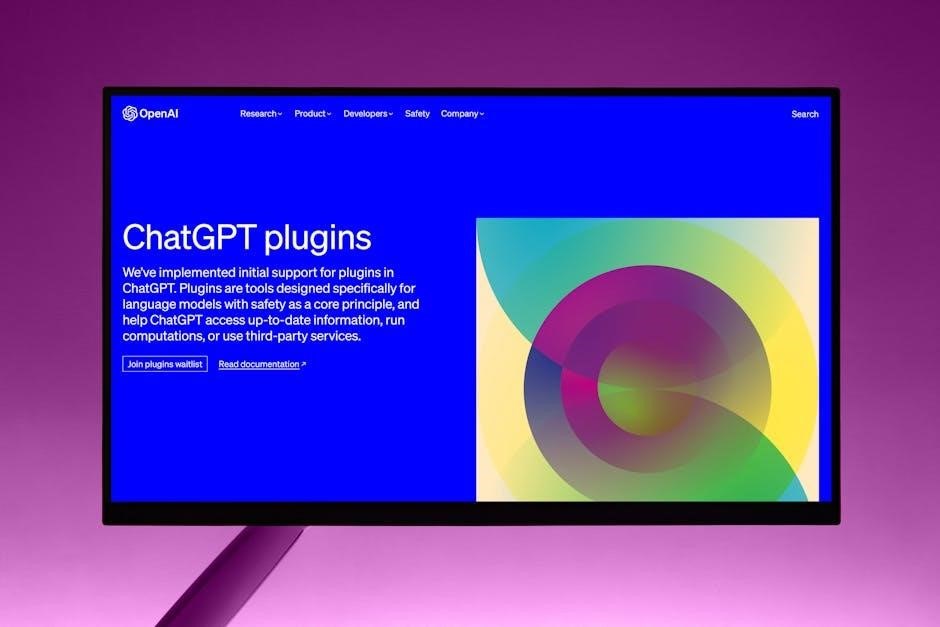across a wide breadth of technologies and platforms‚ including front-end and back-end development skills always.
Definition of Full Stack Web Development
A full stack web developer is a developer that has general knowledge across a wide breadth of technologies and platforms as well as in-depth experience and specialization in a couple of those concepts. This definition is widely accepted and is used to describe a developer who can handle all aspects of web development‚ from front-end to back-end. The term full stack refers to the ability of a developer to work on all layers of a web application‚ including the user interface‚ server-side logic‚ and database management. According to various sources‚ a full stack web developer should have a broad range of skills‚ including proficiency in multiple programming languages‚ frameworks‚ and databases. This comprehensive guide provides an overview of the skills and technologies required to become a full stack web developer‚ including the basics of web development‚ programming languages‚ and software engineering principles.

Key Components of Full Stack Web Development
Core technologies include programming languages and software frameworks always used.
Front-end Development
Back-end Development
Back-end development involves creating the server-side of a website or application‚ using programming languages like Java‚ Python‚ and Ruby‚ and frameworks like Django and Ruby on Rails. This type of development focuses on the logic and functionality of the application‚ including database integration‚ authentication‚ and API connectivity. Back-end developers use various tools and technologies to create a scalable and secure server-side infrastructure‚ including databases like MySQL and MongoDB‚ and caching systems like Redis. They also use version control systems like Git to manage and track changes to the code. Additionally‚ back-end developers must consider security and performance when designing and developing the server-side of the application‚ to ensure that the website or application is stable and secure. Back-end development is a critical part of full stack web development‚ as it determines how the application functions and interacts with the user. With proper back-end development‚ applications can be efficient and reliable.

Benefits of Full Stack Web Development
Full stack web development offers increased efficiency and productivity‚ with developers able to handle all aspects of a project‚ using various technologies and platforms always effectively.
Increased Efficiency
Full stack web development leads to increased efficiency as developers can work on all aspects of a project‚ from front-end to back-end‚ using various technologies and platforms. This approach enables developers to identify and fix problems quickly‚ reducing the time and effort required to complete a project. With full stack web development‚ developers can also reuse code and components‚ which further increases efficiency and productivity. Additionally‚ full stack web developers can handle multiple tasks and responsibilities‚ making them more versatile and valuable to organizations. Overall‚ the increased efficiency of full stack web development allows for faster project completion‚ reduced costs‚ and improved overall quality of the final product‚ making it a highly desirable approach in the industry‚ with many benefits for developers and organizations alike‚ every day.
Improved Communication
Full stack web development facilitates improved communication among team members and stakeholders‚ as developers can understand and address both front-end and back-end requirements. This leads to better collaboration and a more cohesive approach to project development‚ with all team members working towards a common goal. By having a comprehensive understanding of the project‚ full stack web developers can effectively communicate with designers‚ project managers‚ and other stakeholders‚ ensuring that everyone is on the same page. This improved communication also helps to identify and resolve issues quickly‚ reducing misunderstandings and errors‚ and resulting in a smoother project workflow‚ with all team members able to provide input and feedback‚ and work together to deliver a high-quality final product‚ every time‚ with greater ease and efficiency‚ and improved overall project outcomes‚ always.

Full Stack Web Development Resources
Various online resources‚ including books and tutorials‚ provide comprehensive guides to full stack web development‚ offering valuable information and support always.
Online Courses and Tutorials
Online courses and tutorials are essential resources for learning full stack web development‚ providing step-by-step guidance and hands-on experience. These resources cover a wide range of topics‚ from front-end development to back-end development‚ and offer practical exercises and projects to help learners gain practical experience. Many online courses and tutorials are available‚ including those offered by reputable institutions and online platforms‚ and are designed to cater to different learning styles and levels of expertise. With online courses and tutorials‚ learners can study at their own pace and convenience‚ and can access a wealth of learning materials‚ including videos‚ tutorials‚ and interactive coding environments. Additionally‚ many online courses and tutorials offer certification upon completion‚ which can be beneficial for career advancement and professional development. Overall‚ online courses and tutorials are valuable resources for anyone looking to learn full stack web development. They provide flexibility and accessibility.
Books and eBooks
Books and eBooks are valuable resources for learning full stack web development‚ offering comprehensive guidance and in-depth information on various topics. Many books and eBooks are available‚ including “Full Stack Web Development: The Comprehensive Guide” which provides a thorough understanding of full stack web development. These resources cover a wide range of topics‚ from front-end development to back-end development‚ and offer practical examples and case studies to help learners gain a deeper understanding of the subject. eBooks are particularly convenient‚ as they can be accessed on various devices‚ including smartphones‚ tablets‚ and eReaders. Additionally‚ many books and eBooks are written by experienced professionals and experts in the field‚ providing learners with authoritative and reliable information. Overall‚ books and eBooks are essential resources for anyone looking to learn full stack web development‚ providing a wealth of information and guidance. They are widely available online.

Tools and Technologies
Various tools and technologies are used in full stack web development‚ including programming languages and frameworks‚ to build and deploy web applications quickly and efficiently always online.
Programming Languages
These languages are used to build and deploy web applications quickly and efficiently‚ with many resources available online to learn and master them‚ including tutorials‚ courses‚ and reference books‚ such as Full Stack Web Development The Comprehensive Guide‚ which provides a detailed overview of the subject.
The choice of programming language depends on the specific needs of the project‚ with some languages being more suitable for front-end development and others for back-end development‚ and a full stack web developer should have a good understanding of multiple languages to be able to work on different projects and technologies.
Overall‚ programming languages are a crucial part of full stack web development‚ and learning them is essential for anyone looking to pursue a career in this field‚ with many online resources available to help learners get started.
The use of programming languages in full stack web development is constantly evolving‚ with new languages and technologies emerging all the time‚ and developers need to stay up to date with the latest trends and developments to remain competitive.
This requires a commitment to ongoing learning and professional development‚ as well as a willingness to adapt to new technologies and ways of working‚ and to continuously improve and refine their skills and knowledge.
Full stack web development is a complex and multifaceted field‚ and programming languages are just one aspect of it‚ but they are a fundamental part of the process of building and deploying web applications‚ and are used by developers all over the world to create a wide range of different types of web applications and systems.
The Comprehensive Guide provides a detailed overview of the different programming languages used in full stack web development‚ and explains how they are used in different contexts and applications‚ and provides practical examples and case studies to illustrate the key concepts and techniques‚ and to help learners understand how to apply them in real-world situations.
The book is aimed at beginners and experienced developers alike‚ and provides a comprehensive and authoritative guide to the subject‚ covering all the key topics and technologies‚ and providing a thorough and detailed introduction to the field of full stack web development‚ and the programming languages that are used in it.
The Comprehensive Guide is a valuable resource for anyone looking to learn about full stack web development‚ and the programming languages that are used in it‚ and provides a thorough and detailed introduction to the subject‚ covering all the key topics and technologies‚ and providing practical examples and case studies to illustrate the key concepts and techniques.
The book is well written and easy to follow‚ and provides a comprehensive and authoritative guide to the subject‚ covering all the key topics and technologies‚ and providing a thorough and detailed introduction to the field of full stack web development‚ and the programming languages that are used in it‚ with .
Frameworks and Libraries
Full stack web development utilizes various frameworks and libraries to streamline the development process‚ including React and Vue.js‚ which are popular for building dynamic user interfaces and single-page applications. These frameworks provide pre-built components and tools to simplify development‚ allowing developers to focus on writing code. Additionally‚ libraries such as jQuery and Lodash offer useful functions and utilities to perform common tasks‚ making it easier to write efficient and effective code. By leveraging these frameworks and libraries‚ developers can build complex web applications quickly and efficiently‚ with a focus on scalability‚ maintainability‚ and performance. Overall‚ frameworks and libraries play a crucial role in full stack web development‚ enabling developers to build high-quality web applications with ease and speed‚ using a variety of tools and technologies to achieve their goals. This approach enables developers to create robust and scalable applications.
